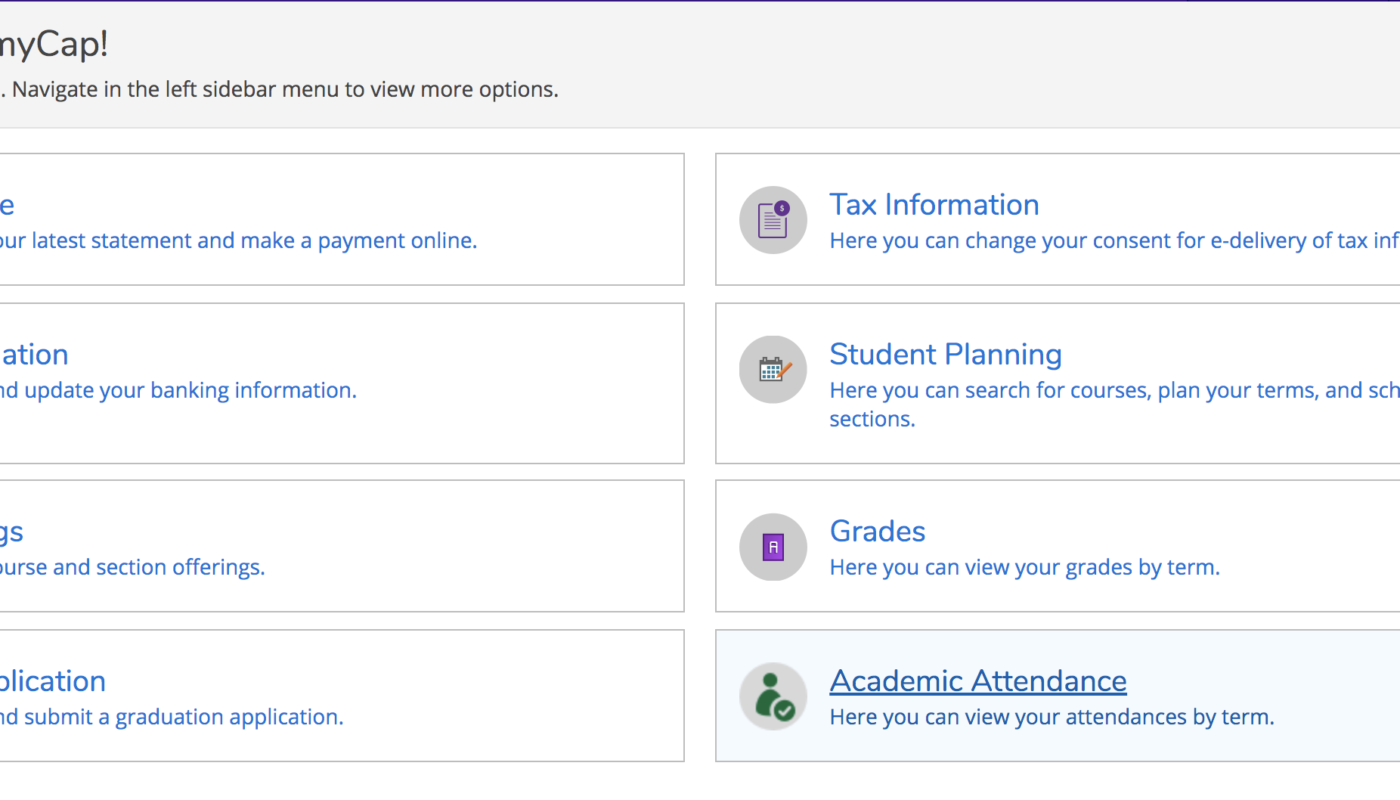Scheduling classes for the upcoming semester can always be a stressful time.
However, the idea of new and exciting classes following winter break somewhat makes up for it.
This year, the scheduling process for classes is different. The ancient Web Advisor system got binned in favor of a new one called Self Service. Capital University receives the system in the form of the new student, parent, and staff platform, myCap.
Cindy Lah, assistant associate registrar said, “WebAdvisor is no longer supported by Ellucian, and has therefore been decommissioned at Capital. An additional drawback of WebAdvisor is that it is not a ‘modern’ web interface, having been developed long before the availability of mobile devices.”
One of the best ways to go about scheduling for classes is to check out the degree audit, which is, for the most part, specific to each student. Your audit is a broken down list of every class and credit required for your major and what classes fulfill those requirements. This serves as a guide for what classes you need to take, as well as records each class that you’ve taken and where it fits in with your degree.
Andrea Karkowski, assistant provost said, “Undergraduate students should go to the registrar’s web page to get a copy of the myCAP training for undergraduates. Then look at their degree audit in myCAP.”
The degree audit can be accessed by going into the “my progress” section. After that information has been collected and looked over, the next step is to take the plan to the advisor who will talk to their respective students about the next semester and beyond.
It is important that students meet with advisors for two reasons. One, students cannot register for classes without first talking to their advisor, who must approve students to register for their planned schedule.
Terry Lahm, senior associate provost at Capital said, “Usually those discussions are much broader than that and much more about what are your career aspirations, how do we get from point A to point B and looking at different pathways to get to their students’ goals.”
Students can trust their advisors to know what they are talking about while giving advice for careers due to their experiences. The advisors also have weekly workshops to discuss areas of improvement for advising.
In addition, the four-year plan that students have come up with may seem incredibly important, however, it is not necessarily set in stone.
It is entirely possible that a class will get filled up before a first-year student can get in and that could change the course of their four-year plan. This is why students need to be able to accept change and be willing to be flexible.
“Always have an open mind, always be flexible. You may think you know how to get from point A to point B in four years, but the path that you have planned on, will [never be taken],” Lahm said.
Lastly, something to look for in the moment when planning and scheduling for courses is to pay attention to the colors on the “schedule” section of the “student planning” part of myCap.
If all the courses on the schedule are green, then scheduling is golden. If they are yellow, then they need to be watched because they could change. If they are red, then there is a scheduling conflict.
If a student has any further questions or concerns regarding scheduling, they are encouraged to reach out to their advisor.


